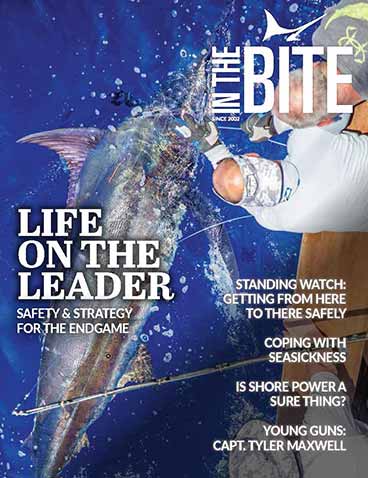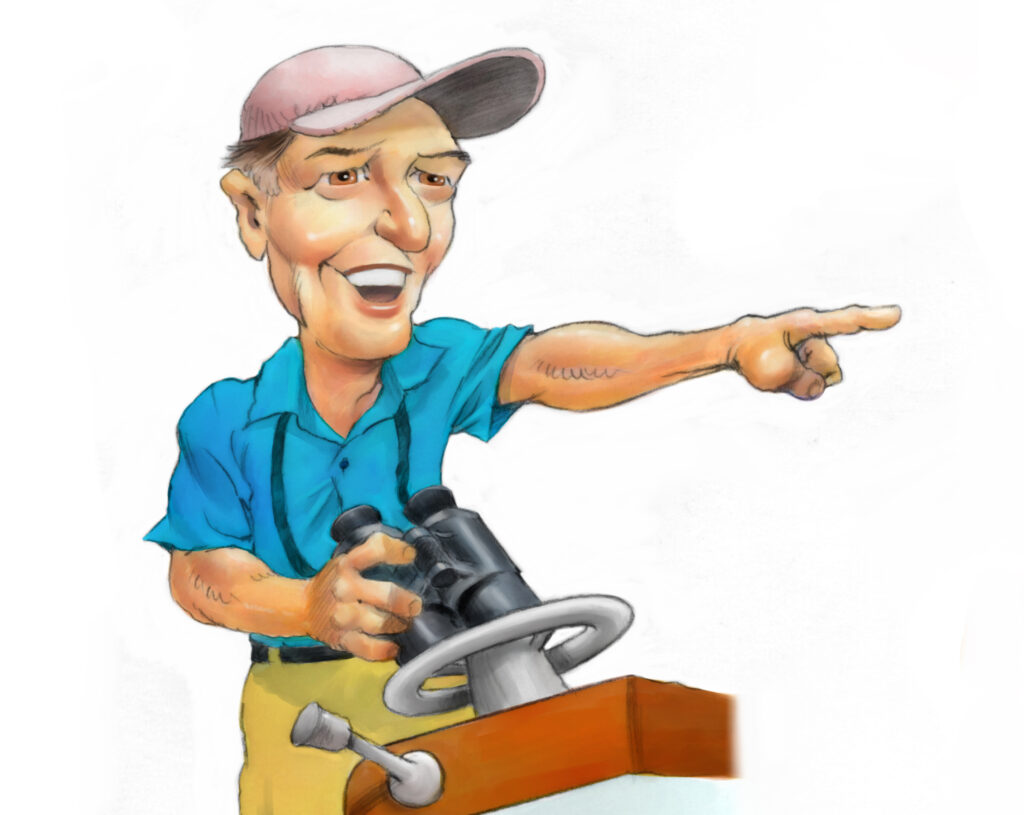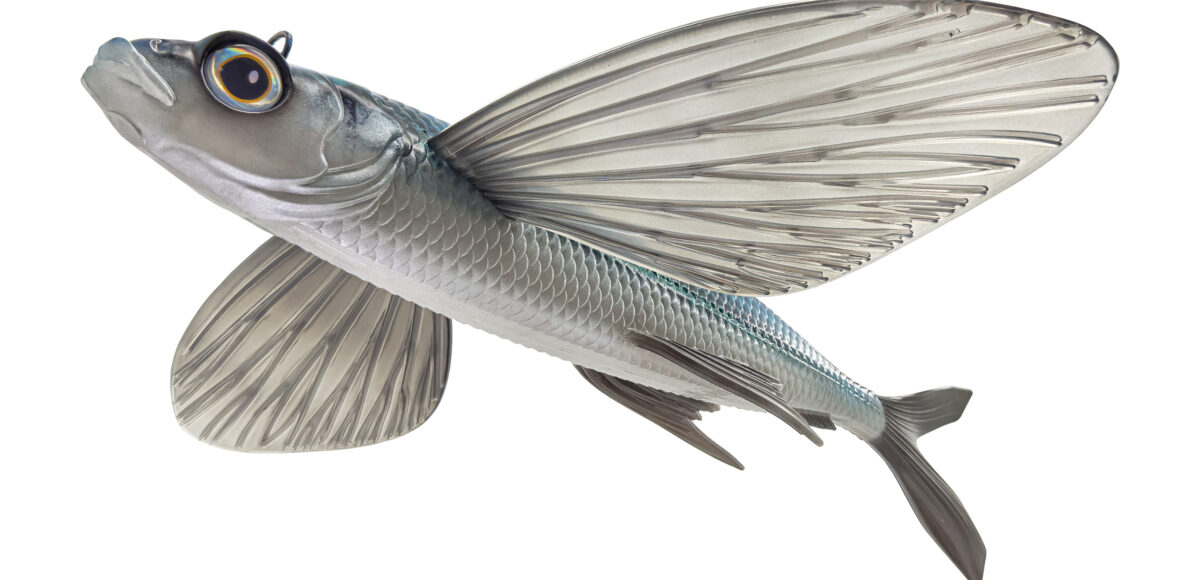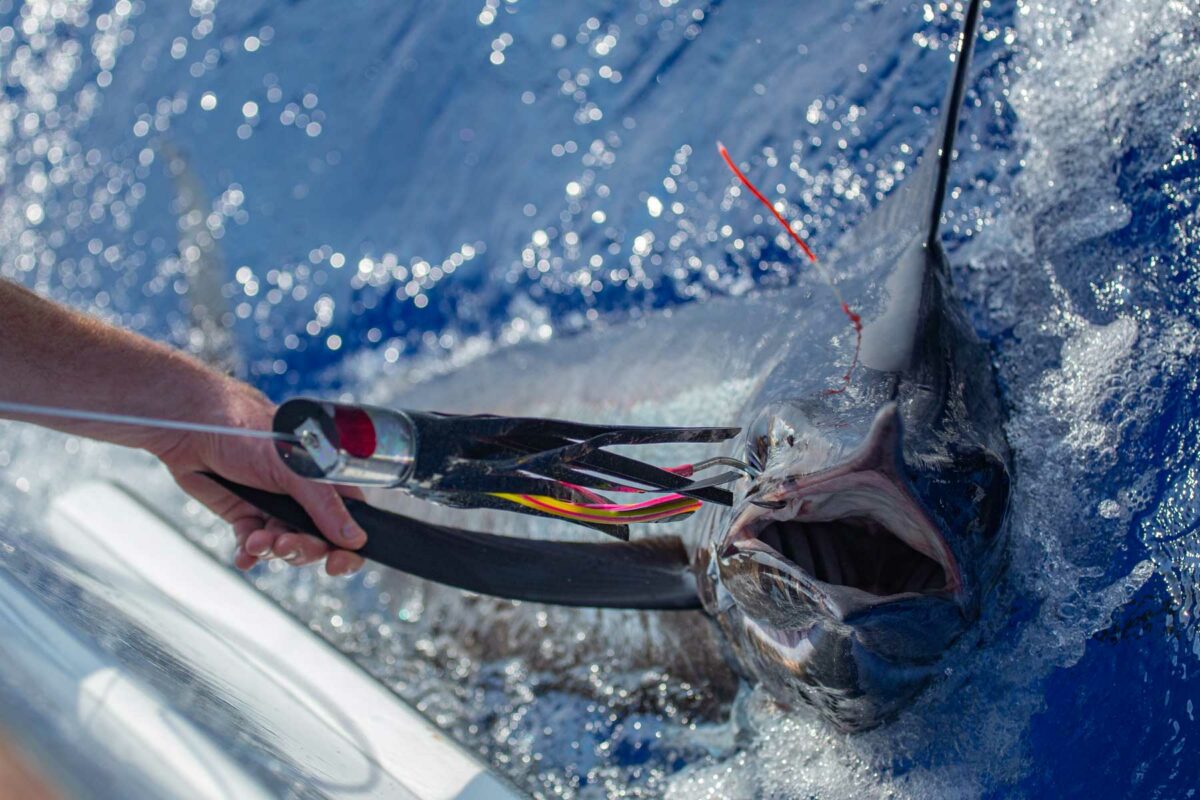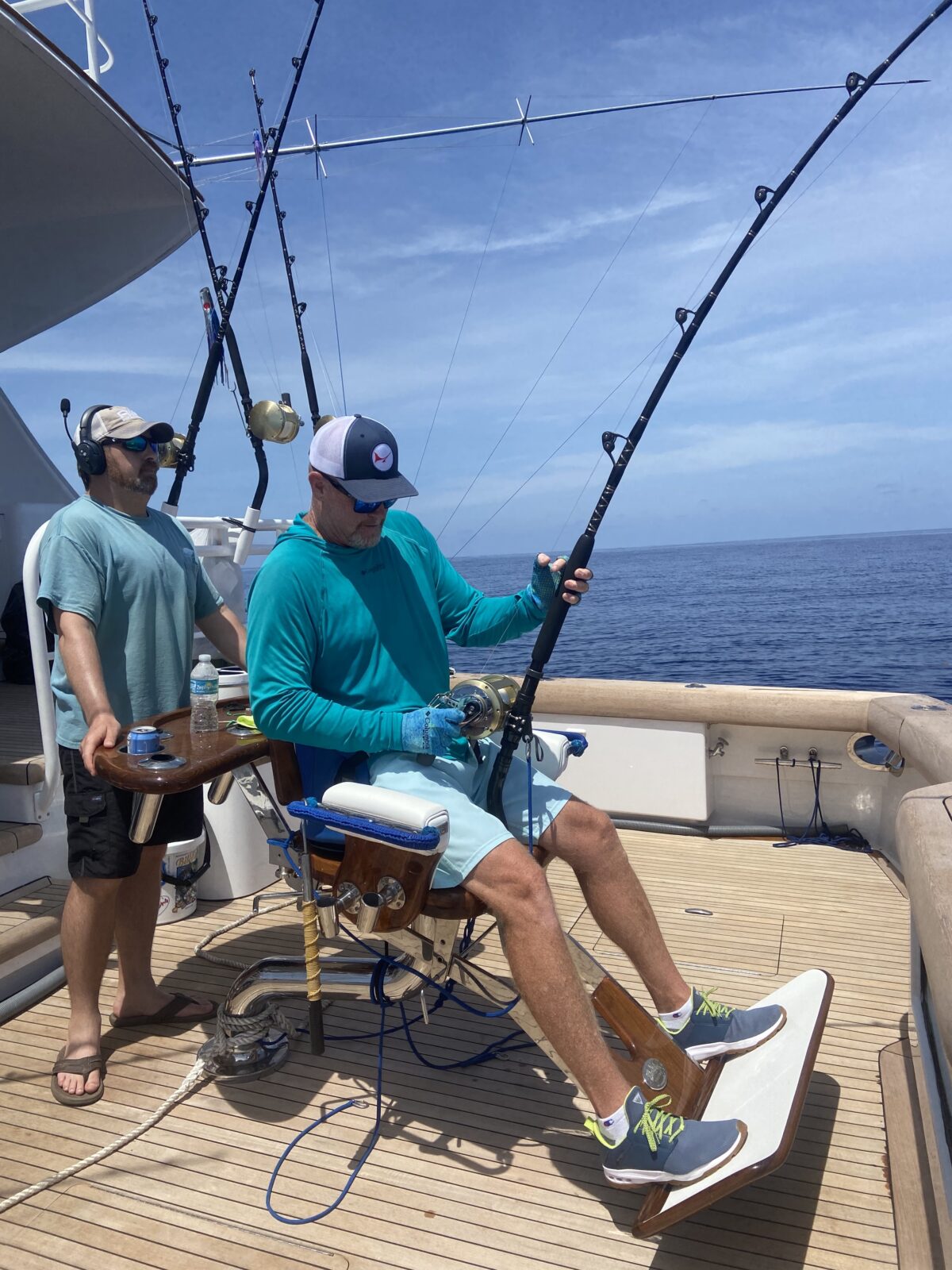There’s no one triggering event that turns a big-game fisherman into a lure collector. That is, everyone gets into it in their own way. Certainly, just participating in the sport of big game marlin fishing makes you somewhat of a collector of vintage fishing lures right from the get-go. Although the lures you seek may be more for catching than collecting, before long you’ll find all of your onboard storage filled to the brim with skirted lures and un-skirted heads that you’ve acquired from here and there. You’ll develop favorites and soon have a stash that’s so important to you in one way or another that you’d never put them back in the spread…or only just during tournament time. Lures conjure memories of good times and can seemingly bring friends and experiences back to life. They connect us with each other, and with the most amazing fish in the sea; they are magical to most, and mythical to others.
Table of Contents
The Collectors’ Tales
The man behind the Miss Behavin operation, David Finkelstein of Houston, Texas has traveled the world in pursuit of billfish. Now, semi-retired he’s living the dream and still pulling lures in his spread. “I’ve always loved lures,” Finkelstein says…and he’s not just saying that. His proof is what he calls his Yee wall. “I was sitting in my office one day and my daughter accidentally knocked my sailfish off the wall,” he says. “I was sitting there with all these boxes of lures around, so I said, ‘You know what? I’m going to make myself a lure wall.’ I called a local builder and he sent over one of his trim carpenters. The picture box I had made was six feet wide and 13-feet long. So, I started filling it and then just kept on going. Started with a bunch of different lure guys and then decided I was going to fill it with Joe Yee’s. I love all lures but I really like collecting Yees. I’ve probably got 500. Most on the wall are Yees, and then I’ve got other stuff stacked up here and there.”
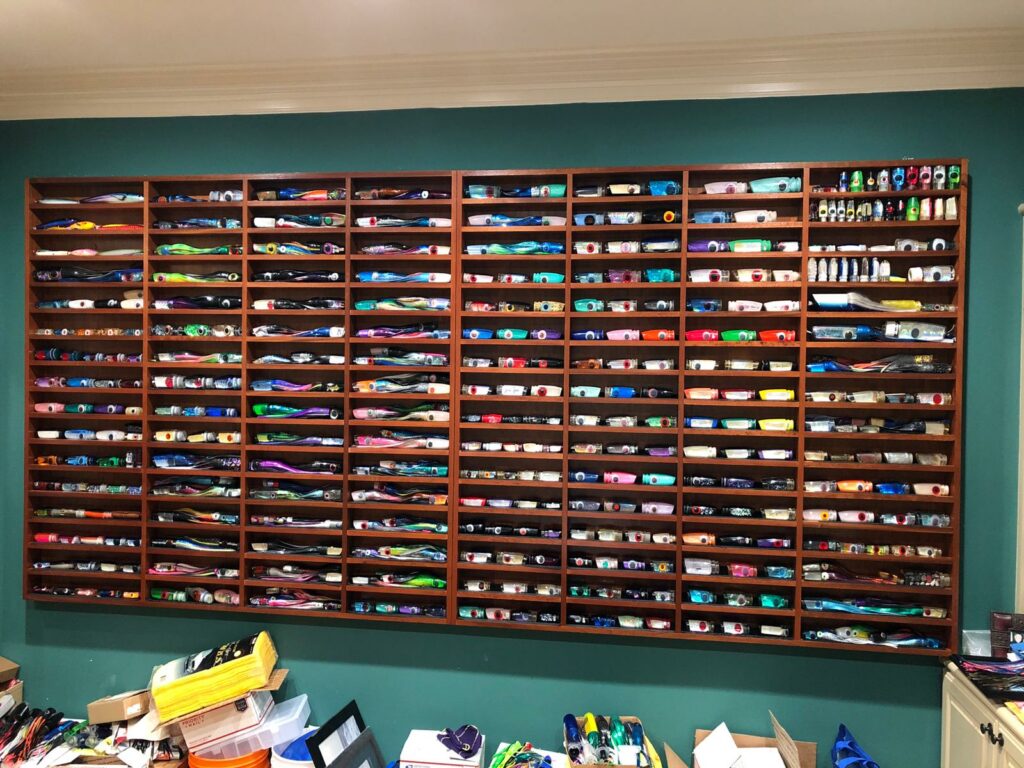
Historical Significance in Sportfishing
What’s crazy is that Finkelstein will probably end up adding to his already copious collection since Joe Yee is still hand turning lures at the ripe old age of 93. Finkelstein became friends with Yee after a fortuitous meeting while on vacation. “I was over in Hawaii with my wife and we got tired of Kona after a while and decided to go over to Honolulu,” he says. “A mutual friend introduced me to Joe and we ended up going out to dinner. After dinner he invited me back to the house. I tell you, I was like a fat kid at the Willy Wonka Chocolate Factory! Walking through his basement I saw things you’ve only heard about! It was unbelievable! He’s been making lures for 60 years…and it’s all right there! So I returned the next day and I’m just checking it all out and he says, ‘start pulling whatever you want.’ That’s when I uh…I mean I always collected, but it was a little bit of this and a little bit of that. I got a lot of Yees.”
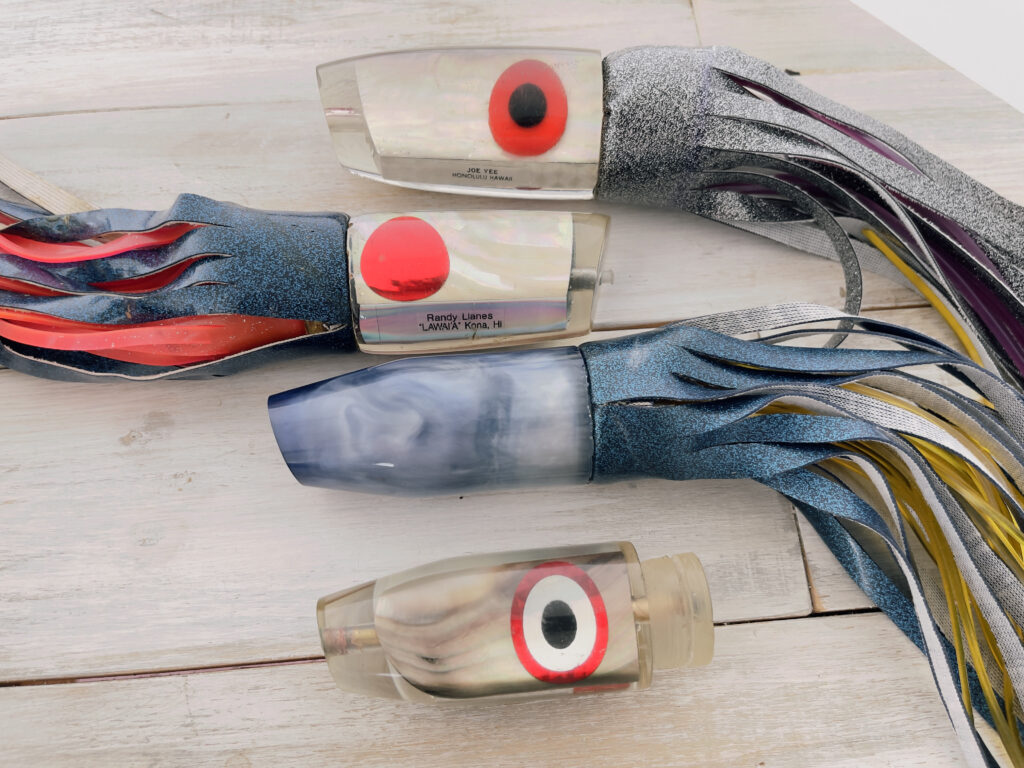
The Art of Collecting
Already a big fan of Joe Yee’s work, a subsequent trip to fish the HIBT with Yee solidified Finkelstein’s passion. “He kept asking me to come and fish the HIBT, so I said if I come, you have to give me a sack of lures and that’s what we are going to troll in the tournament. He agreed and we won it that first time…Top Boat, Most Releases, names on the Governor’s Cup…just awesome!”
As much as Finkelstein likes his Joe Yee’s, Capt. Jason “Tiny” Walcott likes old Bart Miller lures…pre mid-90s to be exact. “Everybody has their own favorites, but I’m an old Bart Miller, hand-turned guy,” Walcott says. “I love the old original lures with the lawn chair hair skirts. I got to spend a good deal of time with him before he passed away. Sadly, he didn’t keep a lot of his older stuff. I got some of his koa wood lures he made for the Gulf of Mexico back in the 1970s and some of his what I call, ‘drippy head’ resin lures. They are a mixture of two or three colors stirred together as the resin was poured into the mold to create a marbled effect. I also got one of his old catalogs from the 1980s and I’m trying to collect one of every lure in the catalog…and I’m about 90 percent there!”
“One of the Holy Grails of Bart lures came up on Vintage Trolling Lures, Facebook page recently,” Walcott says. “It’s black and yellow two-tone. I actually had one just like and sold it in a batch because I didn’t realize it was one of Bart’s lures. It was long before I knew what it was. I’ve been chasing that lure now for about 25 years. Andy Moyes wants the same one.” With the mention of Moyes’ name, who is a tremendous lure maker and collector in his own right, Walcott says that when it comes to fishing, he likes to pull Andy’s lures. “I primarily only fish with Andy Moyes lures. I can’t seem to find lures that run as good as his lures. They are all balanced, they are all weighted right; he makes any color I want and he has so many molds he can make just about anything. His lures run better than the originals that he’s made molds off of…and they are consistent,” Walcott says.
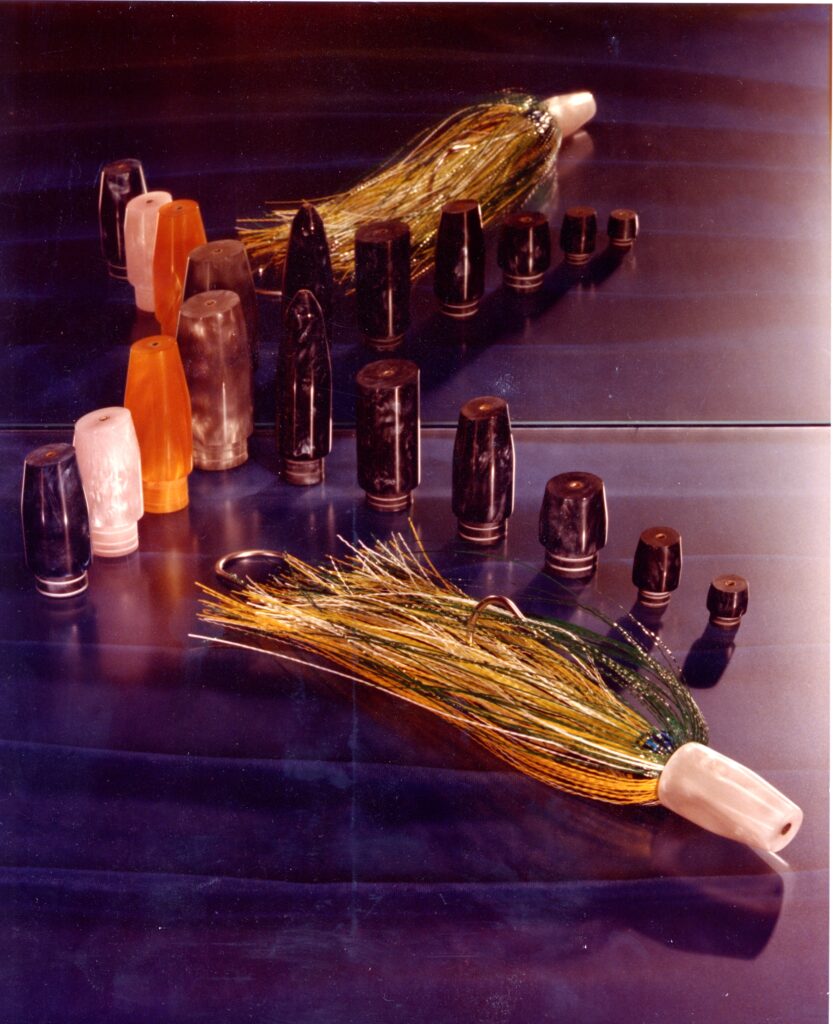
Valuing the Past
Just like everything it seems, the price of vintage, hand-turned lures have increased dramatically. “Prices have gone through the roof,” says Walcott. “I’m more of a ‘barn find’ guy. I’d rather find a Joe Yee in a Kona garage sale. Because of the price increases, I’ve sold almost all of my Joe Yees. I’m not a big Joe Yee collector so I just recently doubled my money on a batch. And I think the prices are just going to go higher. I’ve seen $500 Super Plungers. Joe Yees are crazy…a rare, medium-sized Apollo can go as high as $400.”
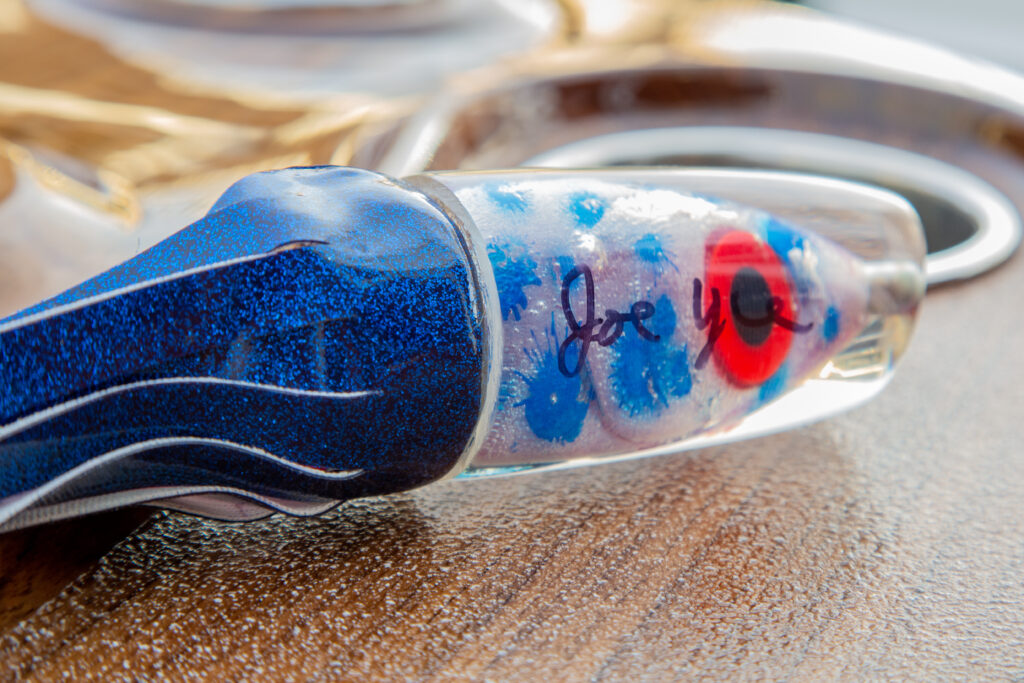
Legacy and Continuity
“A lure is worth what somebody is willing to pay for it,” Finkelstein says. “The hand-poured and turned lures are far more desirable, and most of those are Hawaiian makers. It’s interesting, no two hand-turned lures are going to run the exact same. A lot depends on who is polishing the lure, and the way you put the skirts on, either with thread or glue, etc. If you take the head of a hand-turned lure in your hand and spin it in your shirt, you’ll feel a flat spot on the lure as you turn it. The lure will run differently depending on how large or flat that spot is…and that is determined by who is polishing the lure. Polishing is more important than pouring.
Pioneers of Lure Making
The first individuals who truly revolutionized lure making were Henry Chee and George Parker, Marlin Parker’s father, Finkelstein notes. An interesting anecdote Finkelstein shares involves Henry Chee, a charter boat captain in Kona. The story goes that Chee came up with the idea for his lures after seeing a glass of resin with a screwdriver stuck in it. This accidental discovery led him to use a shot glass for molding his lures. Jim Rizzuto, an authority on the subject, has written extensively about this in books like [Lure Making 101/102 and Lure Making 201/202]. These resources detail the evolution of lure making, from using shower curtain rods from the Kona Hotel to create tubes, to crafting skirts from various materials like lawn chair webbing, upholstery vinyl, or rubber from inner tubes.
Tragically, Henry Chee passed away young, but his legacy continued through his son, Butch, who kept the Chee name alive in the lure-making world. As Finkelstein points out, not every Chee lure found today might be a creation of Henry himself – some could be the work of his son.
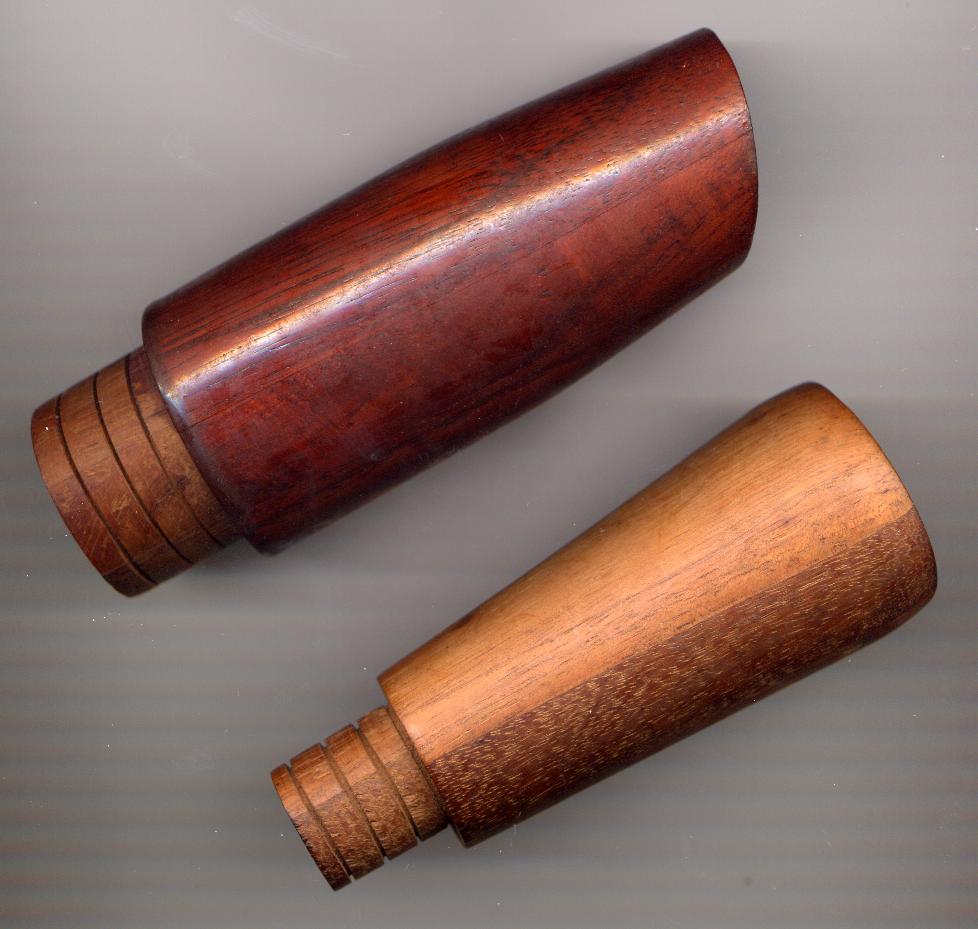
The New Wave of Lure Collecting
Sylvie Madison in Kona, Hawaii, represents the new wave of enthusiasts who have a deep appreciation for the historical significance of vintage fishing lures and their makers. Her journey into this world began almost by chance. After relocating to Kona in 2018, Madison stumbled upon some lures at a garage sale that garnered immense interest on eBay. This experience led her to meet renowned lure maker Bomboy Llanes, who proposed providing her with new lures to sell, ensuring she wouldn’t run out of stock for her then-nascent website, Big Game Lures Hawaii. Madison’s expertise in identifying and appreciating the nuances of different lures grew rapidly, thanks in part to the guidance from knowledgeable individuals like Michael Marks and Jeremy van Bronckhorst
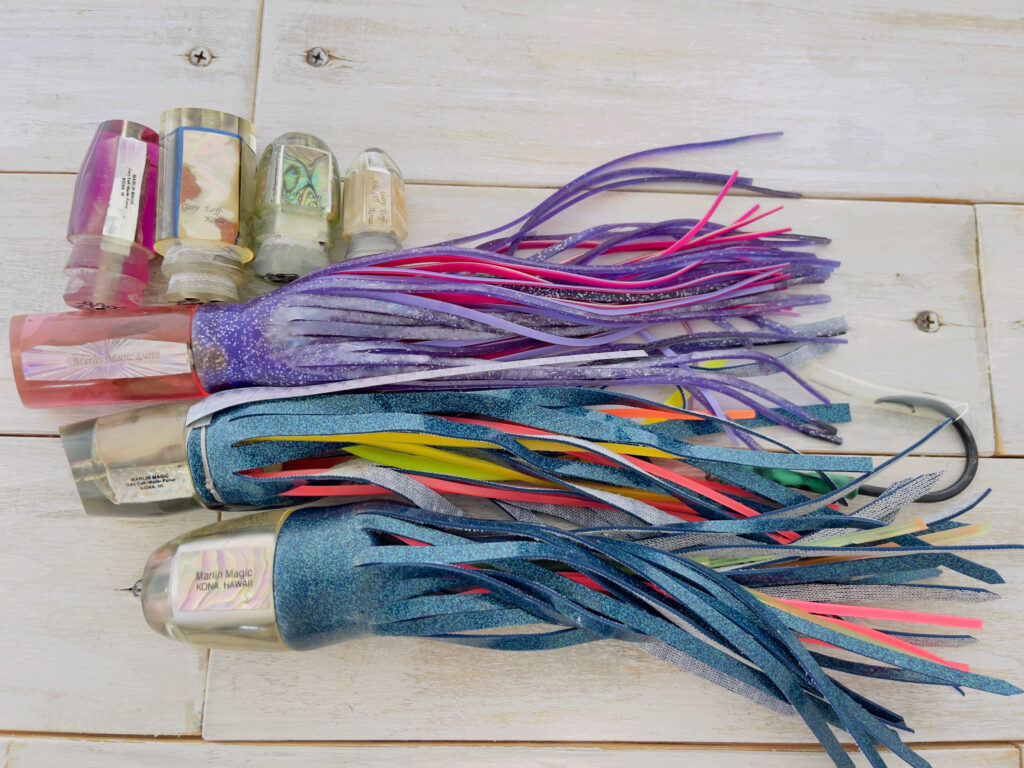
Connecting Collectors and Makers
Madison’s passion led to the creation of the popular Facebook page, “Vintage Trolling Lures, Identification, Discussion and History” in November of 2020. This platform started with a few enthusiasts and quickly expanded to include a wider community of collectors and makers, like Sadu Frehm, Marlin Parker, and Steve Coggin. This group has become a vital resource for verifying the authenticity of lures, with direct input from the makers themselves.
Madison highlights the addictive nature of lure collecting, echoing the sentiments of group member Michael Marks: “Once you learn just a little bit about the history, it can really be a slippery slope on your way to collecting them.” This insight underscores a broader truth about lure collecting – each piece not only represents a tool for fishing but carries a story, a piece of history, and a connection to the pioneers who shaped the art of lure making.
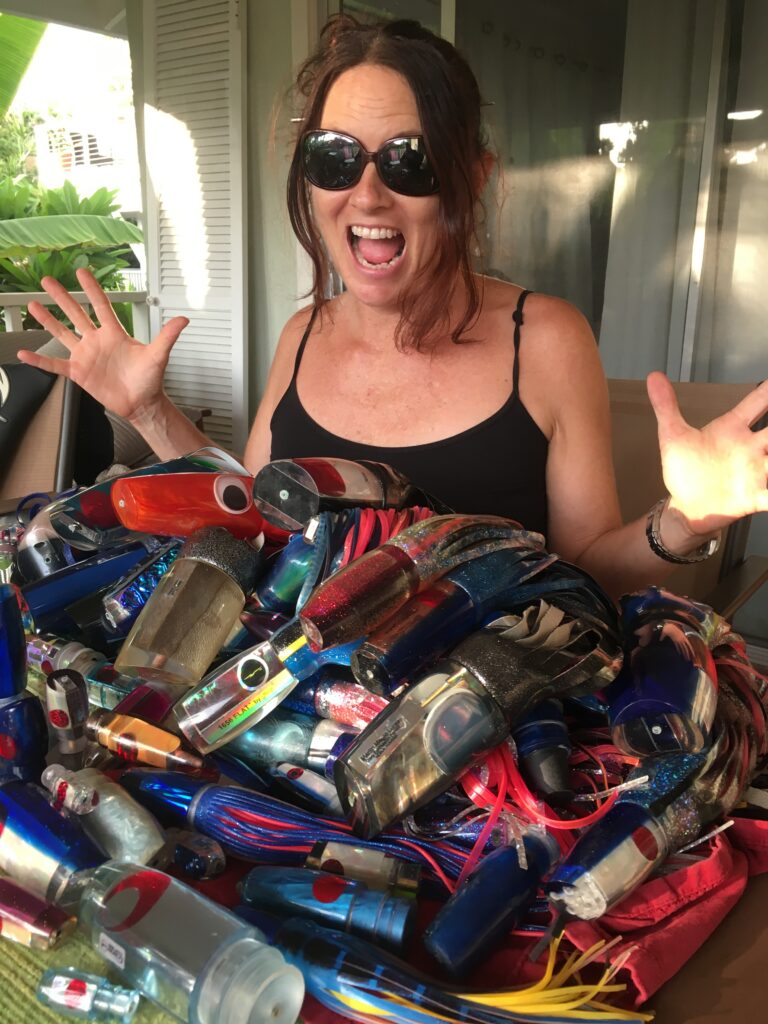
Conclusion: The Legacy of Lure Making
In essence, every modern lure embodies a piece of history, tracing back to those early, innovative lure makers. The journey of collecting vintage fishing lures is more than a hobby; it’s a way of preserving and celebrating the rich, diverse history of sportfishing. As this article reveals, the world of vintage fishing lures is as deep and captivating as the waters these lures once traversed, connecting past to present in the continuous flow of sportfishing tradition.
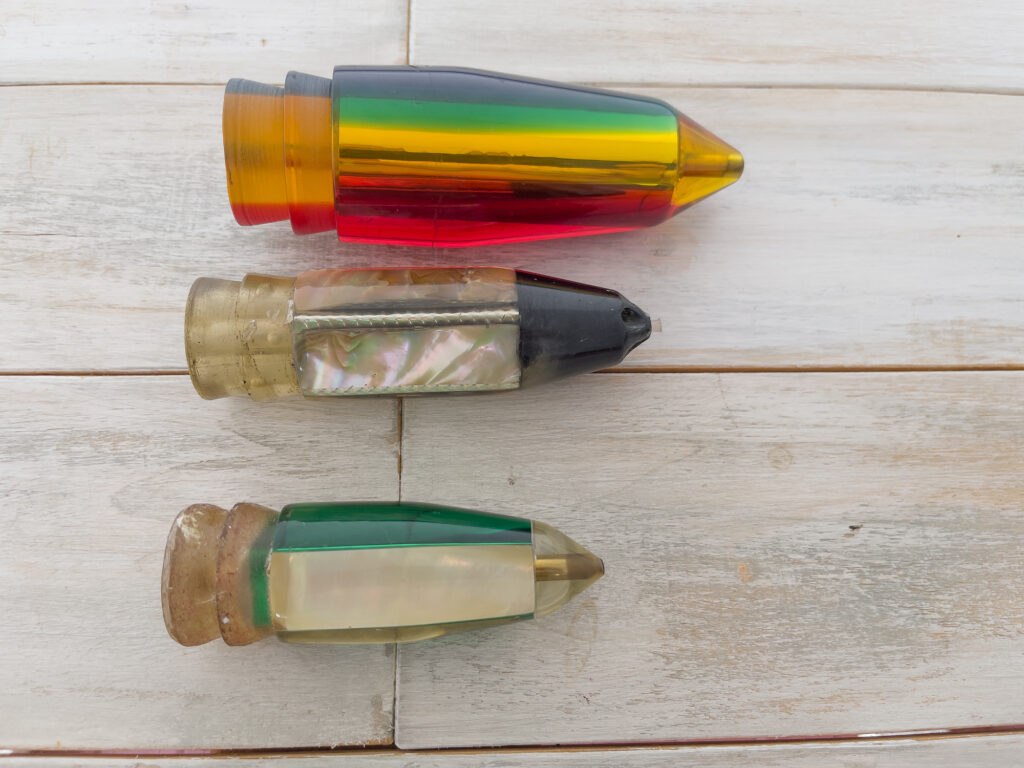
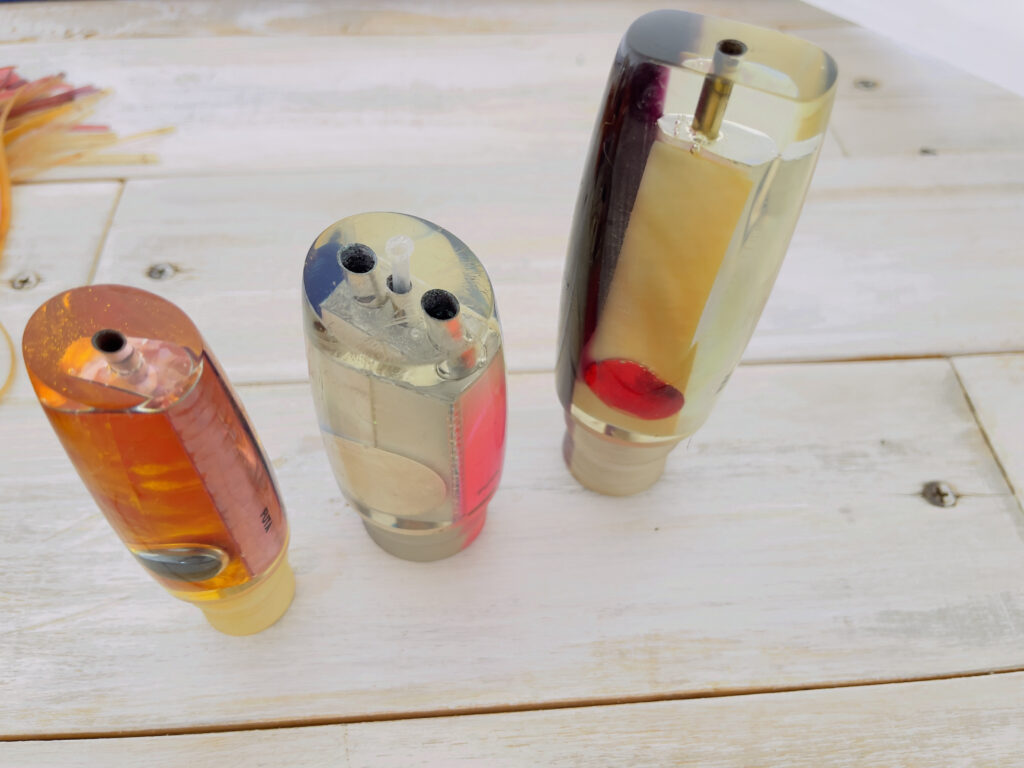
Most Desirable
While everyone likes different things, there no doubt that certain lures are more desirable than others in the collection world. In an effort to narrow down the field a bit I put up a post on Madison Facebook page asking for everyone top 10 most collectible lures and the response was overwhelming. Unfortunately, with over 75 responses and counting there was no way I could sort through more than 750 lures for Master Top 10! Which is probably a good thing because no such thing should really exist. Lure collecting is a personal journey and just like there an ass for every seat in the car business, you can certainly find someone willing to buy almost any lure. Just dont sell anything without checking it on the Facebook page first! Madison says. If you have an old box of lures or something, post up a bunch of pictures on the page and see what you have first. You can check out what the expert quoted in the article felt were their most collectible or desirable lures in the Top. One thing I have figured out, Finkelstein says, is you cant collect them all. And I can guarantee you that I’m not going to go broke buying lures. It’s just fun.
Top 10 Collectibles According to These Collectors
Capt. Jason Tiny Walcott
- Henry Chee
- Butch Chee
- Bart Marble heads
- Vintage Sadus
- Joe Paulicat (LSD Lunger)
- Yozuri bullets
- Joe Yee
- Randy Llanes
- Any lure with Natural fish heads
- Scott Crampton
- David Finkelstein A Yee Man
- Joe Yee super plunger
- Joe Yee Apollo
- Joe Yee 501
- Aloha smash bait
- Joe Yee med plunger
- Koya poi dog
- Koya plunger
- Moyes J boy
- Moyes Argus
- Crampton 1/4 toner
- Capt. Richard Creed
- Older J Yee Medium and Super PlungersPolu Kai Shaka Plunger
- Koya Salt n pepper Poi Dog and 861
- Crampton Red and Black Tubes
- Purple and Black Crampton anything
- Makaira Dr O Specials, any head
- Big Island Lures Maximus
- Bart Bazilliano
- Moyes 1305
- Koya and Yee Collaborated Fish heads, any of them!
- Sylvie Madison
- Original Joe Yee
- Randy Llanes
- Rick Rose of Hawaii
- Old Yozuri glitter head
- Scott Crampton Tubes
- Henry or Butch Chee
- Old Black Bart Millers, with the etching not the label
- Old Marlin Magic Ahi P
- Chester Kaita
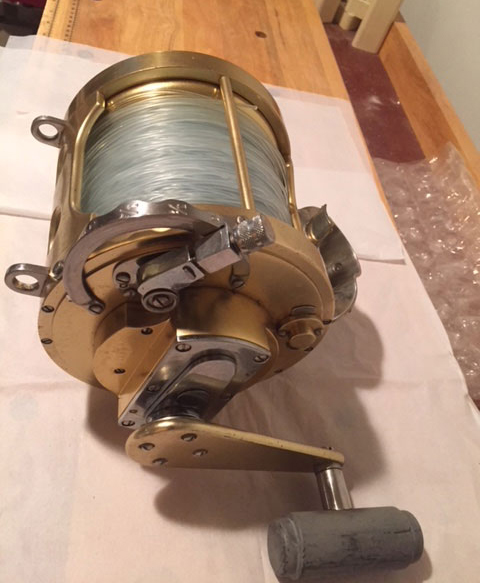
Collecting Antique Reels?
With over 60 years in the big game fishing business, Tommy Green has seen some things! He opened a tackle store in Deerfield Beach, which eventually moved to Lighthouse Point in 1976. This became Custom Rod and Reel. He’s also known to have one of the largest collections of big game lures and antique heavy tackle on the planet. Tommy Green has filing cabinets full of lures, Walcott says. “My jaw would just drop every time I went in there.” While Green does have a lot of lures, his great passion seems to be vintage reels. I still have over $200,000 worth of fishing lures, but I put my money in fishing reels. I have over a million dollars worth of reels. There are two or three reels that you really want. The Fin Nor wedding cake fly reel is one of them. They made them in a one, two, three and four size. Four was the same exact size as the three with a wider spool. The list price for that number four was $169.95 when it was new; I sold one to a Japanese collector for $25,000, Green says. Fin Nor Trolling reels up to 15/0 are the most desirable¦ They were the reels that Hemingway and those guys used to catch big blue marlin and bluefin tuna. At one time I had about 15 or 20 of those and some of the first ones, made in 1934 with the double handles, they were worth $10,000 to $15,000 depending on condition.
Dive Deeper into the World of Sportfishing
You’ve just experienced a taste of the exceptional content featured in the pages of InTheBite Sportfishing Magazine. If you found this engaging, you’re in for a treat with our full publication. Whether you prefer the tactile experience of print or the convenience of digital or both we have a special offer for you.
Unlock Exclusive Savings: Enjoy 50% Off Your Subscription!
Are you ready to explore the thrilling world of sportfishing from the comfort of your home? Subscribe now and embark on a journey filled with captivating stories, expert insights, and insider tips. Choose between our digital or print edition and secure an incredible 50% discount on your subscription.
Subscribe today and get ready for an adventure like no other. Click here to subscribe and elevate your sportfishing experience with InTheBite Sportfishing Magazine.
Don’t Forget to Check Out Our Sportfishing Job Board! Did You Know? It’s the perfect platform for seeking skilled captains and mates. Whether you’re on the hunt for your dream team or looking to join one, your next big adventure begins here. Explore the opportunities now! Click Here

